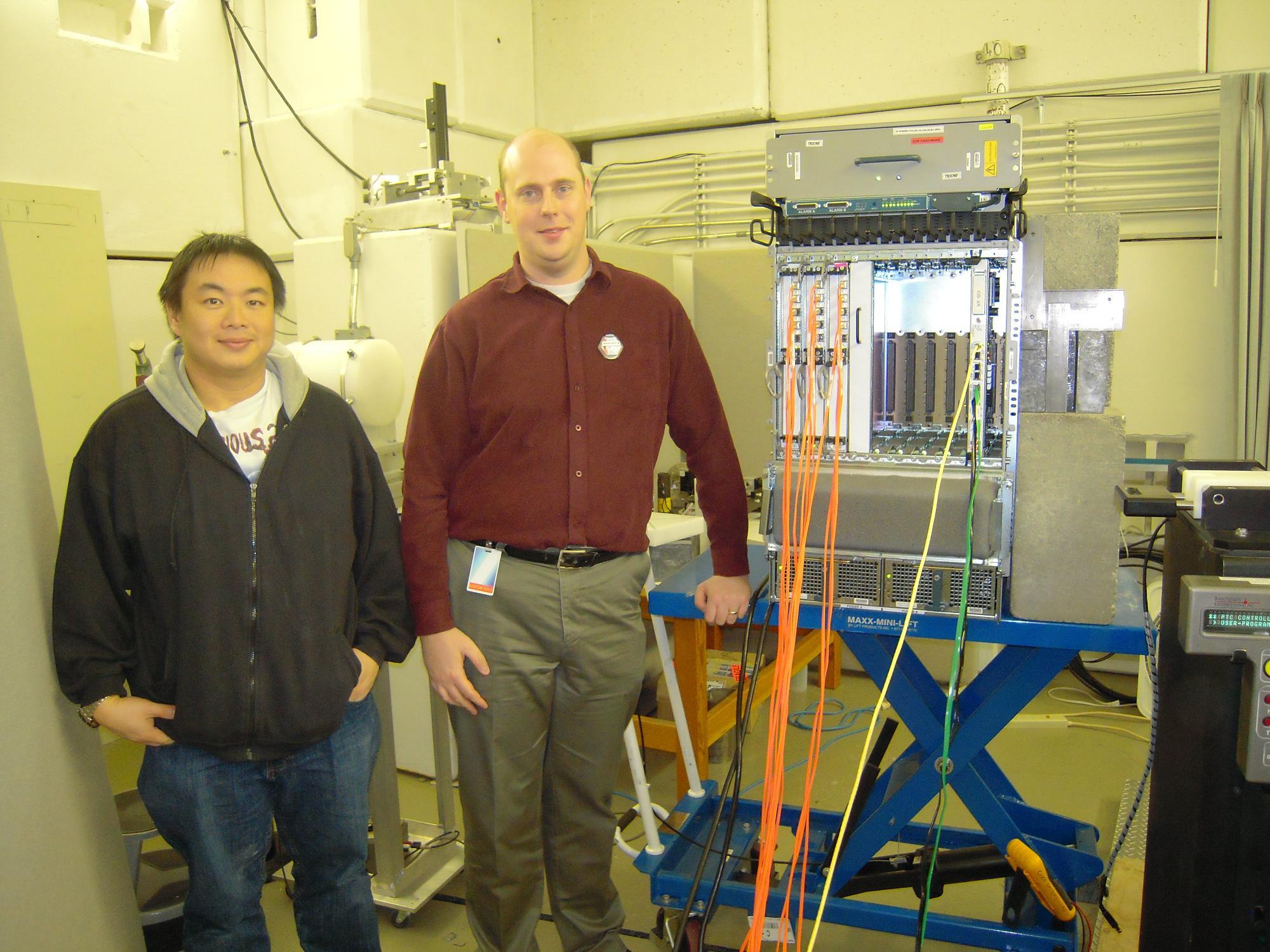 | |
| Above: Cisco engineers David Mah (L) and Mark Warriner (R) from Kanata, ON stand beside their equipment after an overnight testing period. |
Last week, 15 engineers and software specialists from Cisco Systems were at TRIUMF to test their router systems and related networking equipment for the effects of terrestrial or ground-level radiation. The tests were carried out at TRIUMF's Proton Irradiation Facility and Neutron Irradiation Facility (PIF/NIF) in a special large-area neutron beam which simulates atmospheric radiation and can deliver a year's dose of ground-level neutrons in about one minute. The specialists came primarily from San Jose, California, and Kanata, Ontario, and were running around the clock to test the components of six large systems. Many large crates of equipment from Cisco, including some systems manufactured in Bangalore, India, may have been spotted in TRIUMF receiving and the Meson Hall loading bay.
Groups from Cisco Systems have been coming to TRIUMF for testing campaigns such as these since 2006, but this week represents the most ambitious of their test periods in terms of the amount of measurements being carried out. These tests are important as single event upsets caused by neutrons have become one of the critical reliability issues in these complicated systems involving dense arrays of memory chips, processors, and application-specific integrated circuits (ASICs). While it is possible to select components and use error correction codes (EEC) to minimize the radiation effects on these systems, it is important to test them under accelerated beam conditions so that the systems operate with high reliability and there are no surprises. TRIUMF provides proton and neutron beams for such testing to about 25 companies each year representing the space, avionic, and communication industries.
The atmospheric neutrons are produced when energetic protons, mostly from the sun, strike the earth's atmosphere and interact with the oxygen and nitrogen nuclei to produce neutrons. These neutrons are attenuated by the earth's atmosphere but some make it to ground level. The rate at ground level is about 15 neutrons/cm2 per hour with energies above 10 MeV. At airplane altitudes it is about a factor 300 higher. Single-event effects (SEE) are one of the most detrimental effects of the natural space environment on electronics. In memory circuits, information is stored via charge storage at nodes in a circuit. If a high-energy heavy ion, proton, or neutron strikes a circuit node, it can induce sufficient charge in a transistor to change the state of the node and cause false information to be stored. This type of failure is a non-destructive soft error and is known as a single-event upset (SEU).
At TRIUMF a large area neutron beam is produced by stopping a beam of protons from the cyclotron in a lead beam stop. High energy neutrons come out as a beam in the forward direction and the rate of neutrons can be varied by changing the proton intensity or by setting up the test equipment at different distances from the lead beam stop.
Further information can be provided by Ewart Blackmore, Coordinator of TRIUMF Radiation Effect testing.
-- Ewart Blackmore, Manager Proton Therapy, PIF, NIF
